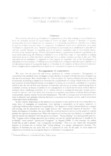Technology of Regeneration of Natural Forests in Japan
Tropical agriculture research series : proceedings of a symposium on tropical agriculture researches
| ISSN | 03889386 |
|---|---|
| NII recode ID (NCID) | AA00870529 |

Full text
tars12-_173-183.pdf2.32 MB
For centuries, the planting of Cryptomeria japonica trees after clear cutting of natural forests has been the principal method of regeneration of forests in Japan. Because of diversity of species, management of natural forest can not compete as a wood producing industry with the monoculture of species of high economic value in temperate broadleaved forest zones which have been most developed in Japan in the past. Natural regeneration of plantations once established is also difficult and not feasible because of luxuriant growth of natural vegetation and of silvicultural characteristics of the favored species. Even in plantation forestry suppression of natural vegetation is the most labor-consuming job. Planting Cryptomeria trees in the final stage of crop rotation in shifting cultivation so as to utilize the fallow period had been a rather common practice in the past. This agri-silvicultural technique is supposed to have played an important role in the development of plantation forestry in Japan. Problems associated with clear cutting are also discussed, and the need for the enhancement of managerial degrees of freedom in the solution of the problems is stressed. Some thoughts about tropical forestry based on the experience in Japan are also presented.
| Date of issued | |
|---|---|
| Creator | Taisitiroo SATOO |
| Publisher | Japan International Research Center for Agricultural Sciences |
| Volume | 12 |
| spage | 173 |
| epage | 183 |
| Language | eng |
